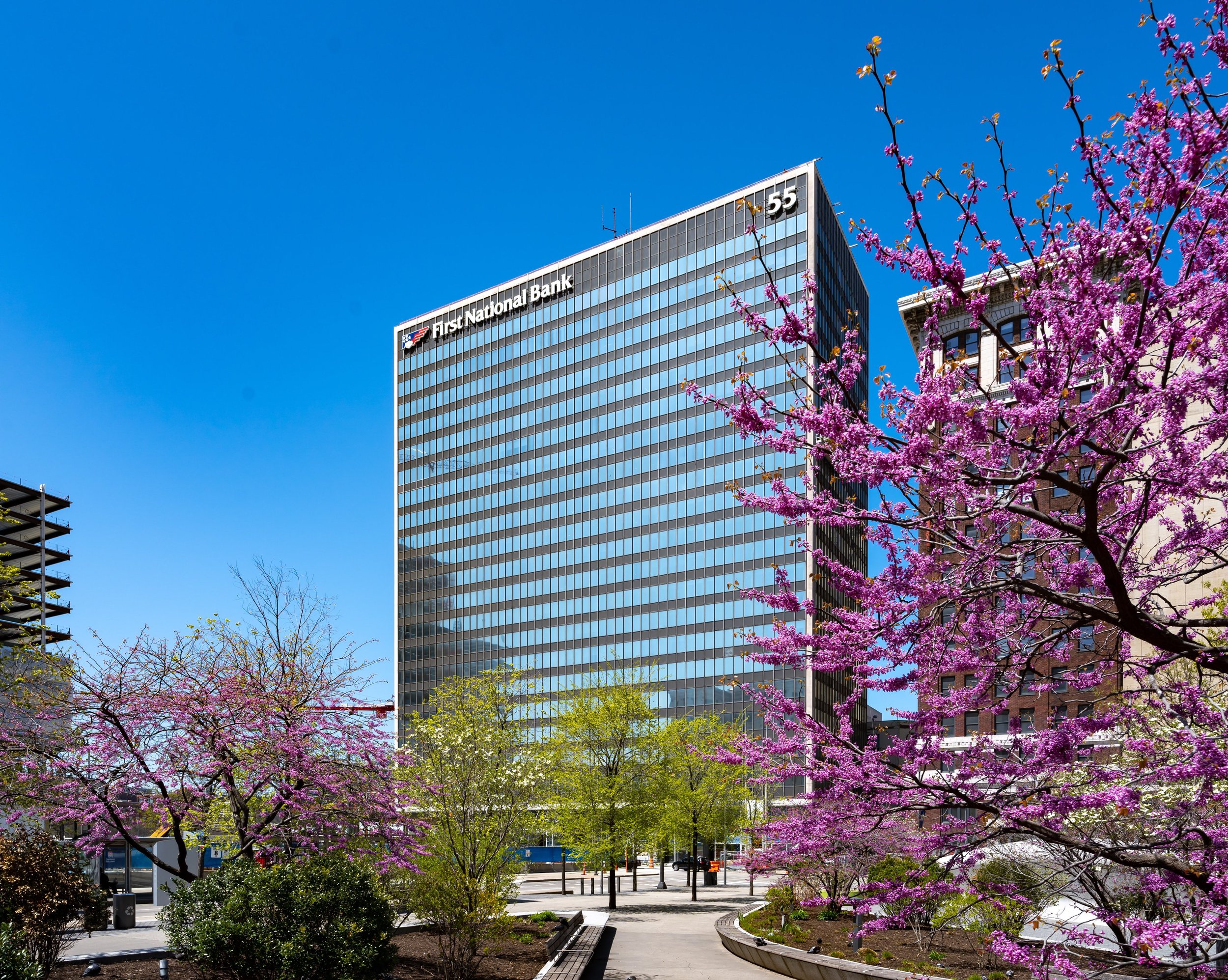Advocacy in Action: Converting Downtown Cleveland
By Sam Rocco
The persistence of remote work has left downtowns across the country reeling with the overwhelming question, “What are we going to do with vacant office space?” In Downtown Cleveland, we have long known the answer: convert office space to housing.
Residences at 55
A recent study from CBRE recognized Downtown Cleveland as the #1 city in the nation for the share of our office space slated for residential conversions. Our leadership in residential conversions has positioned us strongly among peers emerging from the pandemic.
It must be acknowledged that we can’t solely convert our way out of the crisis in the office market. While residential density is critical to our success in becoming a truly vibrant, 18-hour neighborhood, job density is also vitally important. To maintain our standing as the economic powerhouse of the region, we need to make it easy and attractive for businesses to locate here. From that perspective, viable office buildings should continue to build up their amenities to attract and retain tenants.
The May Circa 1920
Our Success So Far
The May Today
By and large, this trend toward tenants choosing quality office space is happening Downtown. Per CBRE, in the third quarter of 2023, Downtown Cleveland saw positive net absorption for the first time in five quarters. The Downtown occupancy rate for Class A office space currently hovers around 84%, while Class B space is around 80% occupied. Tenants that are keen on maintaining a physical office presence are choosing high-quality spaces with good amenities. In discussing commercial-to-residential conversions, we do not intend to undermine the importance of strong, well-performing office buildings; rather, we acknowledge that Downtown’s office market would be in a more challenging position coming out of the pandemic but for our expertise in conversions.
The Atrium at The May
To demonstrate this success, we look to the incredible growth in Public Square in the last 7 years since the park was redeveloped. In 2016, there were 41 residential units adjacent to the Square. Today, there are 1,238 residential units. This growth was generated by five historic preservation office-to-residential conversion projects: The Standard, The Terminal Tower Residences, The May, 75 Public Square, and Residences at 55.
The Standard
While Downtowns across the country attempt to navigate (or create) the process of converting newly empty office space to other uses, Downtown Cleveland continues to do this work and do it well. The University of Toronto recently published a study ranking the recovery of major Downtowns across the country, and we fared remarkably well. Downtown Cleveland ranked #1 in Ohio, #3 in the Great Lakes Region, ranked ahead of peer Downtowns like Pittsburgh and Detroit, and ahead of larger Downtowns like Philadelphia, Chicago and Houston.
How Downtown Cleveland, Inc. Helps
Downtown Cleveland, Inc. advocates for the creation of a larger incentives toolbox at all levels of government. State programs, such as historic preservation tax credits, brownfield remediation grants, and transformational mixed-use tax credits close financing gaps and push projects towards completion. Downtown Cleveland, Inc. was successful in advocacy efforts during the most recent State Operating Budget, where we supported the creation of an annually capped $100 million Ohio Low-Income Housing Tax Credit, piggybacking off the federal program to help subsidize the development of affordable rental units. Currently, we are advocating at the local level for the creation of a Downtown tax-increment financing district to incentivize investment into Downtown’s public realm infrastructure.
75 Public Square
Recently, President Biden announced a legislative package to support the conversion of high-vacancy commercial buildings to residential use through new guidance, technical assistance, and focus on transit-oriented development. President Biden’s actions send a strong reminder to Downtown organizations that while the office market is struggling, there are tools that can be created, enhanced, and leveraged to mitigate vacancies and prevent foreclosures.
Now is the time to take action. We need all civic leaders, organizations, and Downtown enthusiasts to unite behind advocacy efforts at the federal, state, and local levels. We must get creative; think of new programs and ways to pair incentives, and new ideas that attract residents, employees, and visitors.
Stay up to date on Downtown Cleveland’s recovery by visiting our Data Dashboard.






